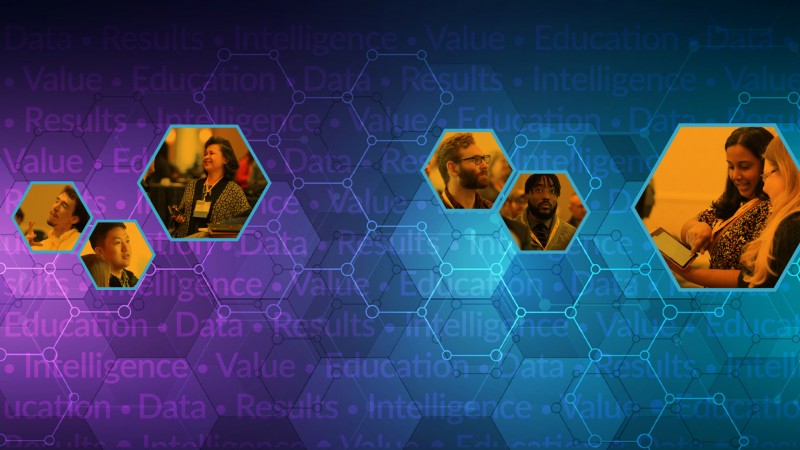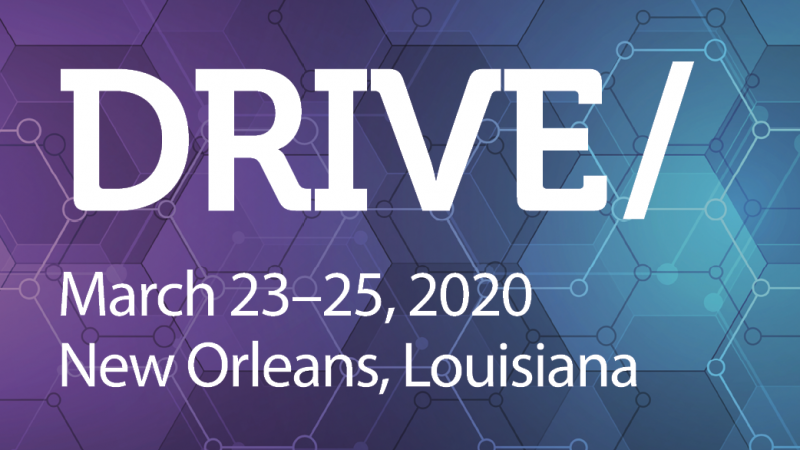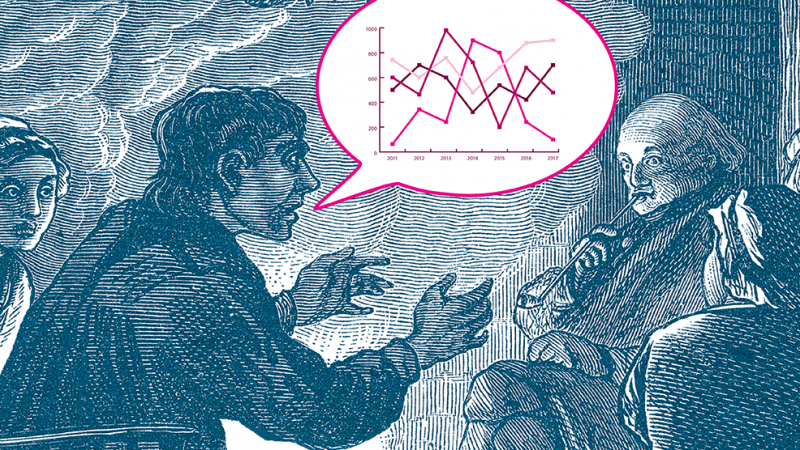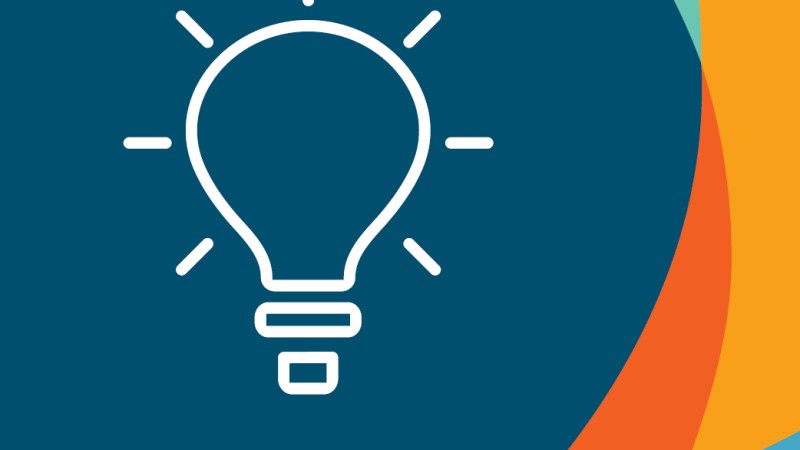
Member Profile: Sarah Barr and Rodger Devine
Technology, data, people, and problem-solving power Sarah Barr and Rodger Devine’s day-to-day lives.
Barr is executive director of analytics and technology solutions at the University of Chicago and Devine associate dean for strategy and innovation at the University of Southern California. As chair and co-chair of DRIVE/ 2020, CASE's data and analytics conference this March in New Orleans, Barr and Devine are shaping a program rich with data-driven insights.
Here, they share more about their career paths, what challenges higher education faces around data, and their favorite data resources.

Rodger Devine
Inside DRIVE/Cast
With the entire world working from home and in-person conferences no longer feasible due to COVID-19, CASE is offering DRIVE/Cast Livestream May 28-29. Participants will have the opportunity to experience dynamic key sessions, informative breakouts, and an interactive chat platform.
We caught back up with chair Sarah Barr and co-chair Rodger Devine to see how their work has changed and what’s new with the DRIVE/Cast program.
How has COVID-19 changed the nature of your work in the last few months?
Sarah Barr: We were fortunate to kick off a CRM implementation right before the shelter in place order went into effect, so our implementation is now being done remotely. This has been going smoothly, and has even made us more efficient. We have carefully planned agendas for all of our implementation meetings, and we are using teleconferencing tools to collect questions, comments, and consensus on key decisions. We have also moved many of our in-person alumni events to virtual webinars and that has been a huge success with more participation than ever before. Also, as we work with families and those caring for others, we can see the traditional work week is changing, and that more flexibility does not mean less productivity. I think we are all working on developing a new work/life balance.
Rodger Devine: During the last few months my work has shifted completely to a remote work environment, which has been a new experience for most of our teams. To support this transition, we have relied on a mixture of teleconferencing (phone, video chat, etc.) and digital collaboration tools (Salesforce, Slack, Trello, etc.) to keep connected, informed, and coordinated. We have also experimented with digital engagement, virtual events, and creative outreach to steward our constituents and offer our institutional support during these challenging times. We continue to listen, reflect, and learn new ways to improve our remote work practices every day.
What has changed about the program for DRIVE/ now that it’s shifted to an online event?
RD: The DRIVE/ program obviously had to evolve to accommodate an online offering this year. We are fortunate that many key sessions, including our keynote sessions, will be available during the online DRIVE/Cast on May 28-29, and there will be some additional social events and interactive ToGather presentations as well. I’m especially grateful to all of our CASE staff, DRIVE/ planning committee, and extraordinary volunteers who helped make DRIVE/Cast possible.
SB: CASE was able to quickly pivot to make this offering available and the content will be just as forward-thinking and high quality as it would have been in person. Having this event is so important to keep the community connected and sustain momentum. We will miss seeing everyone in person this year, but we know we can “see” each other virtually and we will all be together again in the future.
What do you hope participants will take away from DRIVE/Cast?
RD: I hope DRIVE/Cast participants will leave inspired with new ideas and approaches to addressing the familiar challenges and opportunities we face in our respective institutions. I also hope that DRIVE/Cast will be increasingly accessible to new global audiences who previously might not have been planning or able to attend in person. Now, more than ever, it is clear that we need data science, digital engagement, and technology-enabled solutions to help advance our organizational missions in effective, efficient, and sustainable ways. I’m looking forward to seeing everyone at DRIVE/Cast and continuing the conversation.
SB: More than ever we need technology to move us forward. We also need smart, efficient ways to use that technology, which will require us to reengineer our processes, think outside the box when it comes to analysis and automation, and make it extremely important that we stay connected with one another.
What led you to advancement and your current role?
Sarah Barr: I came from the field of urban planning, working in community development. A lot of my work with the city government and community organizations centered around data and how to use it to make key planning decisions. That was the jumping off point for my work in analytics which was a newly developing field at the time of my transition to University of Chicago and the field of advancement.
Rodger Devine: I found advancement and my current role by way of technology and data analytics. After completing graduate studies in information science at the University of Michigan while working full-time as an IT/software engineer, I joined the U-M Ross School of Business’s development and alumni relations team in an inaugural analytics leadership role. Technology, data, and people have always been major themes and focal points in my career.
What’s the best part of your job?
RD: As an executive leader, the best part of my job is the opportunity to build other leaders, orchestrate change, and enable success. I enjoy leading a diverse team of analytical, talented, and hard-working individuals and, most importantly, helping them reaching their personal and professional goals.
SB: I love problem solving with people. We have a great team (many of whom also came from urban planning!) and mapping out strategy for how to tackle a data or technology project with our partners and then seeing it come to fruition is the best part of the work.
What are you most looking forward to at DRIVE/ 2020?
SB: My favorite part is DRIVE/ is bringing together all the smart, talented folks in our industry for a couple of jam-packed days of engaging conversation and idea generation!
RD: I look forward to reaching new audiences with diverse speakers, innovative programming, and technology-forward session content.
What are you hoping that attendees will come away with?
SB: I hope our attendees walk away energized, full of new ideas to bring back to the office. Even if you walk away with one good idea that you truly can implement when you return to home base, that makes it a good conference. Past conferences have given me ideas on new technology to start using, new techniques that were in reach for our analysts, or ways I could organize teams around a new project.
What do you see as some of the biggest challenges for higher education around data and analytics?
RD: Some of the biggest challenges for higher education to tackle around data and analytics are ethics, governance, data lifecycle, and infrastructure.
SB: A lot of us are entering a new world of really sophisticated analytics and large technology projects, on par with corporate scale implementations, and we are trying to figure out how to make that work in a non-profit/higher ed environment. Our environment is just as complex, if not more, and we have to figure out to execute with smaller budgets and fewer resources.
RD: Plus, the growth of collaborative data science platforms, including cloud-based data engineering and production environments, will help us accomplish more at unprecedented scale.
SB: I am most excited to see how our advancement shops around the country strategize and build out their analytics and technology environments—be it big data or data visualization, integration platforms or new CRMs.
What’s one great resource you’d recommend for data analytics professionals?
SB: I must recommend Data Science for Fundraising by Rodger Devine and Ashutosh Nandeshwar. It is part of the fundraising analytics canon!
RD: Google’s Chief Decision Scientist Cassie Kozyrkov’s “The AI Safety Mindset: 12 Rules for a Safer AI Future.”
What’s the one app on your phone you couldn’t live without?
SB: For the Gemini in me, I have to name two that are on opposite sides of the spectrum: I cannot live without Evernote for my pervasive note-taking and list-making. But also Calm for my daily dose of meditation!
RD: Google Maps or Words with Friends, of course, but that’s too obvious. The Kindle app because being able to virtually carry an entire library of books around with me all the time is invaluable.
About the author(s)
Meredith Barnett is the Managing Editor at CASE.











